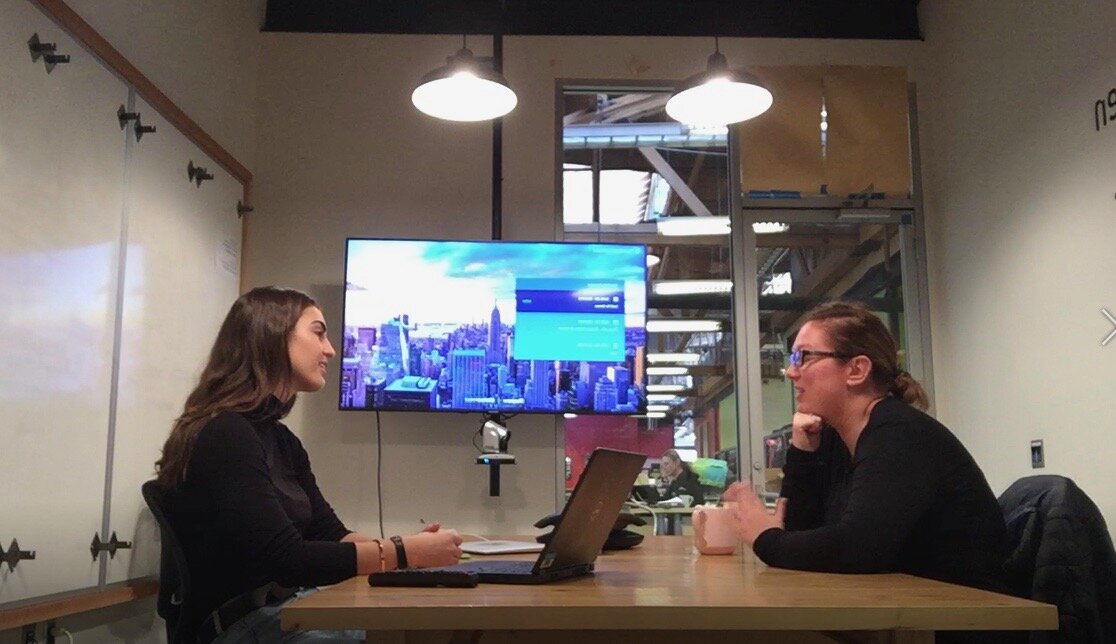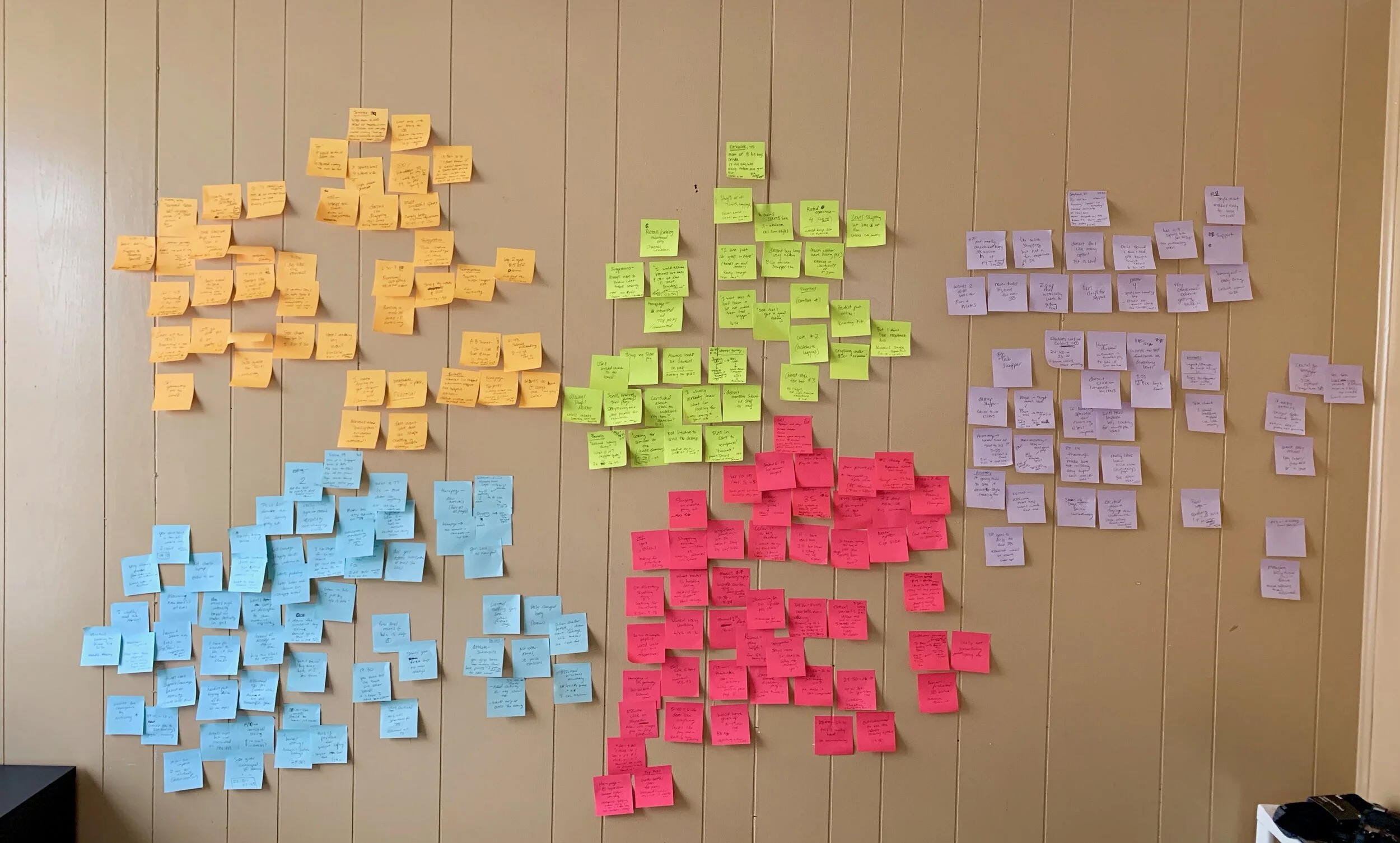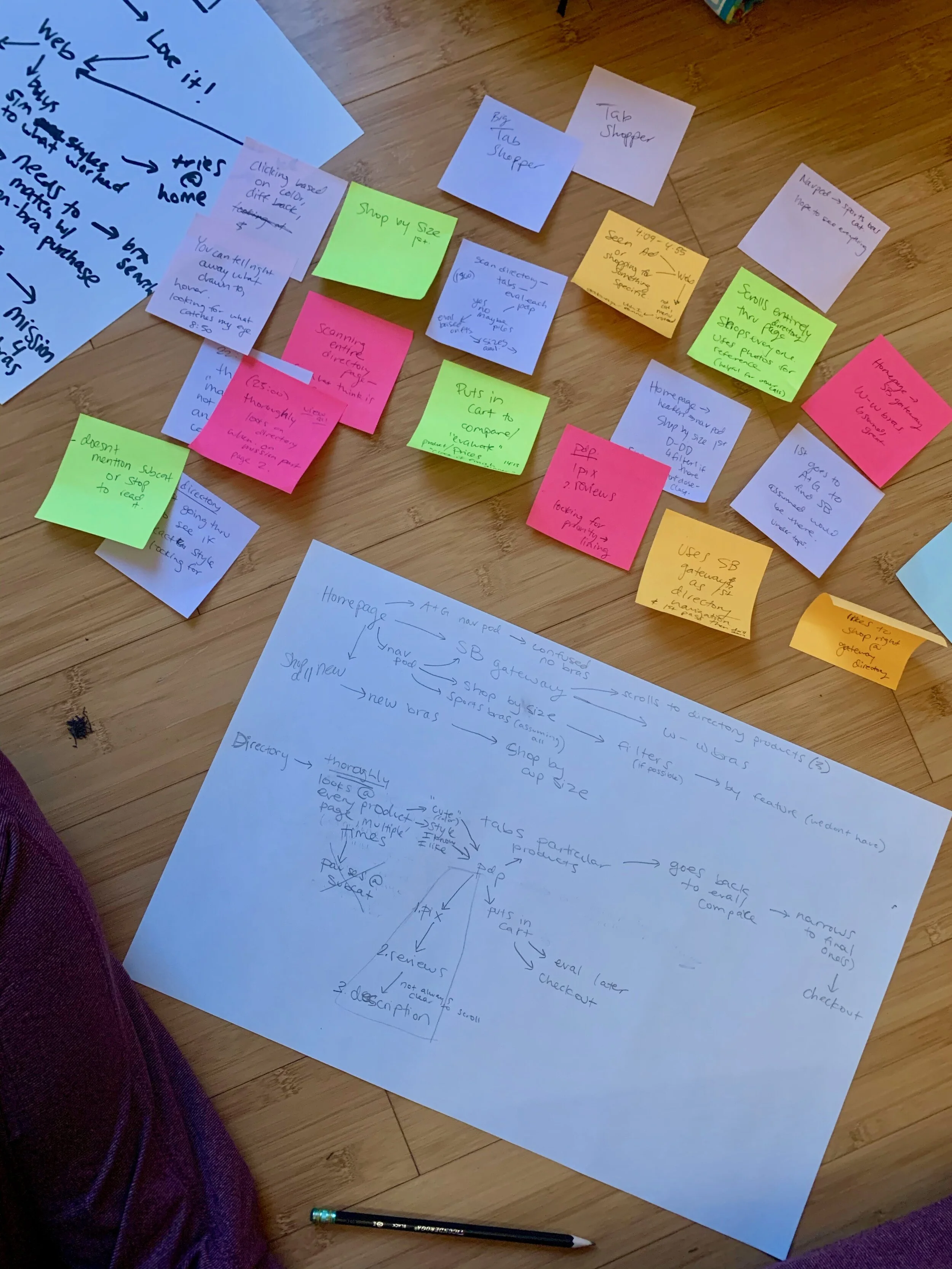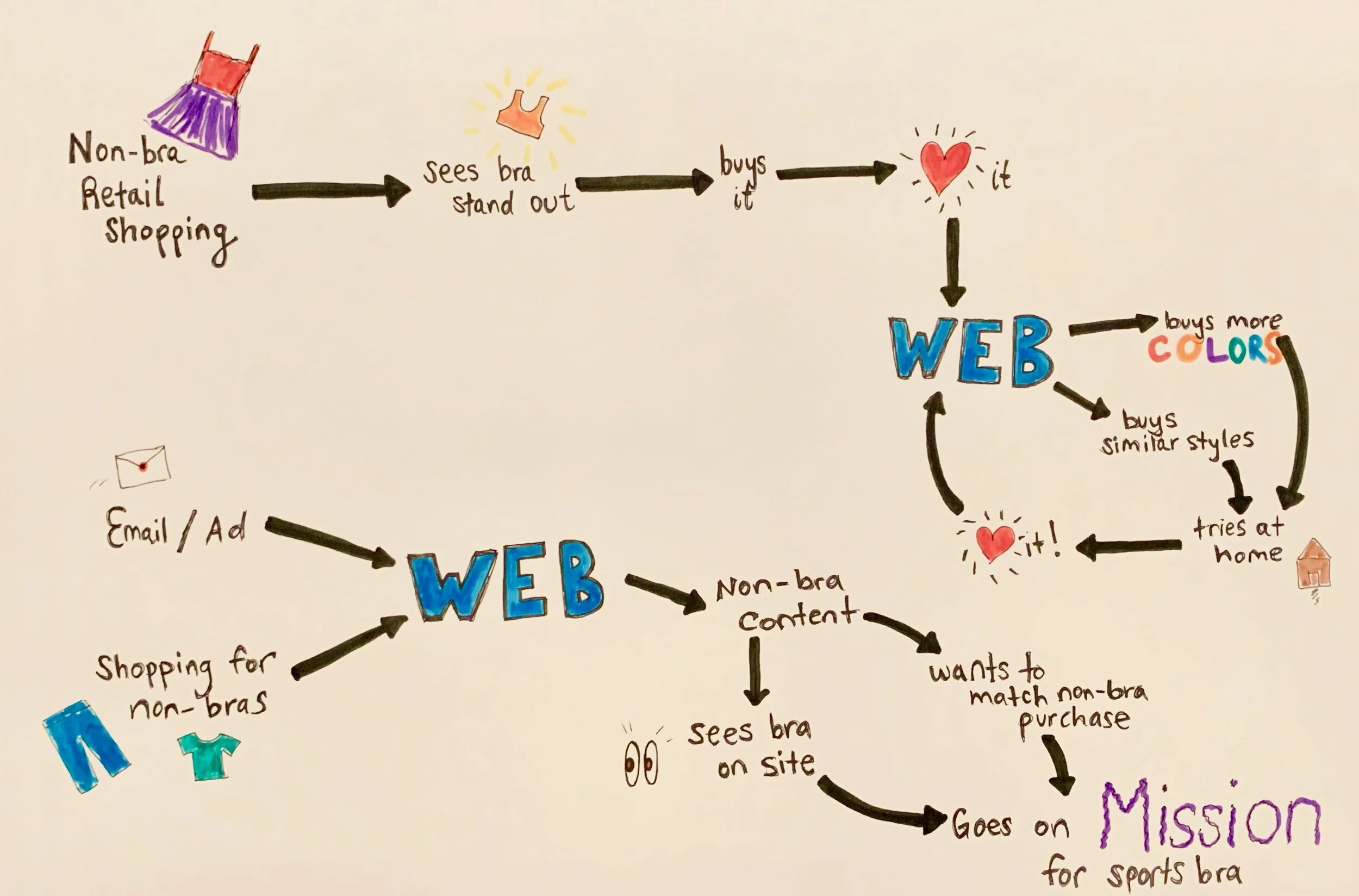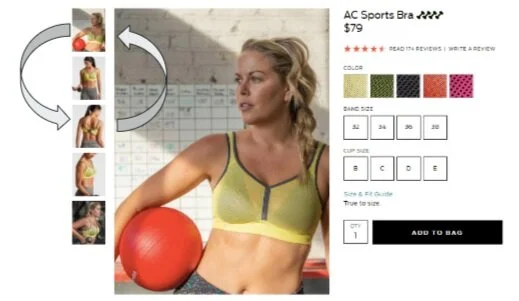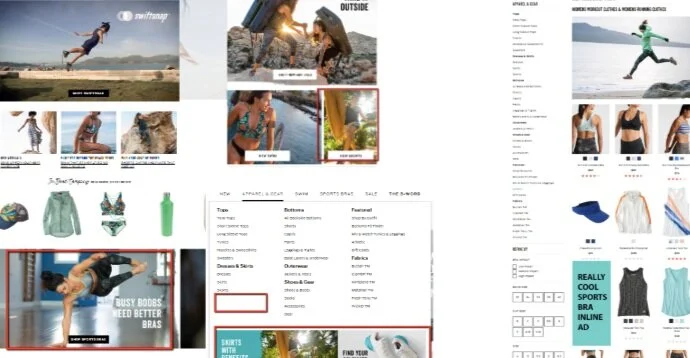
Usability Testing for Online Sports Bra Shoppers
Challenge: Uncover customer insights regarding prospective customer’s online experience shopping for sports bras
My contribution: Lead UX researcher driving all aspects of study design, recruitment, interview, analysis, presentation and solutions & outcomes for Title Nine’s first-ever UX Research project.
Impact: Presented three clear actionable recommendations to Founder & President; Rolled out implementation plan to various stakeholders.
Method: Usability testing, in-person user interviews
Background
Sports bras are a fundamental part of Title Nine’s core business and its mission to move women’s movement forward. Yet, in 2019, sports bra sales were down 5% YOY. Our Ecommerce team was asked to come up with a better online sports bra shopping experience for our customers.
After doing a competitive analysis chart and full audit of our site, it was clear to me that we needed to go beyond the surface to dive deeper into what her true problems were. Instead of assuming at what her problems were, we needed to talk to her directly — and we need to do so in a human-centered way.
To get buy-in on Title Nine’s first UX research project, I proposed to the Founder/CEO and President that I would do in-person usability testing with five of our target market customers. It was approved!
Questions
I was particularly interested in answering these three questions:
What does her customer journey look like when shopping for a sports bra?
What are her needs and priorities in a sports bra & are we meeting those needs on our current site?
Why does she make the decisions that she makes?
Method & Approach
Recruitment phase: Participants (n=5) were recruited via two methods:
1. posting on Facebook groups with a brief introduction, criteria and compensation information
2. emailed local past buyers (within four years)
Participants ranged in familiarity to our brand, but none had purchased a sports bra with us before. The company is currently transitioning target markets, and I was most interested in the “Maximizer Mamas” (i.e. persona for new target market women aged 35-45 years old). This persona is less familiar with our brand than our typical older customer, so I wanted this study to reflect that level of familiarity.
Screening phase:
5-minute phone call screening to insure study fit.
Invited five different women to come into our headquarters for an hour conversation with me. Asked each woman to not familiarize herself with our site prior to the interview.
Created templates for follow up and reminder emails to streamline the process.
Interview Preparation:
Strategized using interview guide that structured the first twenty minutes to talk about her lifestyle, what she looks for in a sports bra, and the challenges she faces when shopping for a sports bra, and the last forty minutes to navigate the site in her chosen device.
Received feedback on interview guide from Director of Ecommerce and Brand Consultant. Met with merchant team to incorporate feedback on key points of interest from their perspective.
Ran two pilot sessions with colleagues.
Prepared and tested two forms of technology to capture recordings of both video and audio. Set up lab for user sessions.
Shortcomings:
Lack of racial and size diversity due to time constraints and budget. In hindsight, I wish I had included one more D+ bra sized participant.
Interviews
Connected and empathized with each user. Probed at each decision point to understand why she was making the choices she was making.
Example Task Scenario: Imagine you are in your own living room online shopping, find as close to the perfect sports bra for your body as you can. Add your preferred size and color of this chosen bra to the cart.
Presented $100 gift card compensation and revealed surprise that we would be sending her her chosen bra in the mail shortly after the interview. I chose to make this a surprise to ensure she would not look at our site prior to the interview or select a bra based on price alone.
Analysis & Results
I rewatched all interviews and took notes on post-it notes documenting direct quotes, observations, underlying motives, and more. I represented each participant with a different color post-it note.
Affinity Clustering - First, I sorted the post-it notes by participants (see above). Next, I grouped them by topic and category of conversation, from what her top priorities in a sports bra are to what she thought of our model photography (see below).
I mapped out her customer journey based on the various pathways she told me she typically takes when buying a new sports bra.
Post-its organized by themes and topics on my bedroom wall
Customer journey providing insight into steps before web browsing.
Sample video recording
Next, I developed insight statements based on the key themes and findings in each category grouping. For example, comments and observations about her #1 priority in a sports bra were summarized into the following user statement:
Maximizer Mamas #1 priority in a sports bra is a specific need, for her specific body, given what has already worked in the past.
Or what I learned from her comments about model photography was:
Maximizer Mamas need to easily and quickly see the front and back style of the bra in order to evaluate if it will work for her specific body or not.
Based upon the findings from the user insight statements and the customer journey map, I crafted How Might We questions to focus in on four key places we could find solutions to her pain points. They were:
How might we... help her see a sports bra when she’s shopping in a non-bra category?
How might we... offer the ability to find a sports bra by activity?
How might we... improve our model photography order on the directory level so she has the information she is looking for?
How might we... help her find more colors of the style she already loves?
Outcomes & Impact
I presented my findings and conclusions to the Founder/CEO and President and received positive feedback. I gave additional presentations to a meeting for all managers within the company, the merchant team (bra buyers), and the creative team. As part of my presentations, I created a series of short video compilations of the screen recordings of participants navigating our site, which brought the customer into the room in a more human-centered way.
Additionally, the Founder/CEO asked to have an additional one-on-one longer presentation to dive deeper into my findings and discuss how we would implement the proposed solutions.
Implementation plan:
We implemented the following three design solutions:
Low fidelity Wireframes of Three Solutions
1. Introduce Shop By Activity category section below Shop By Size section in left navigation
2. Change model photography order so that when she’s shopping on a directory page she will sees both front and back shots quickly and easily
3. Endless opportunities to market sports bras in non-bra categories
